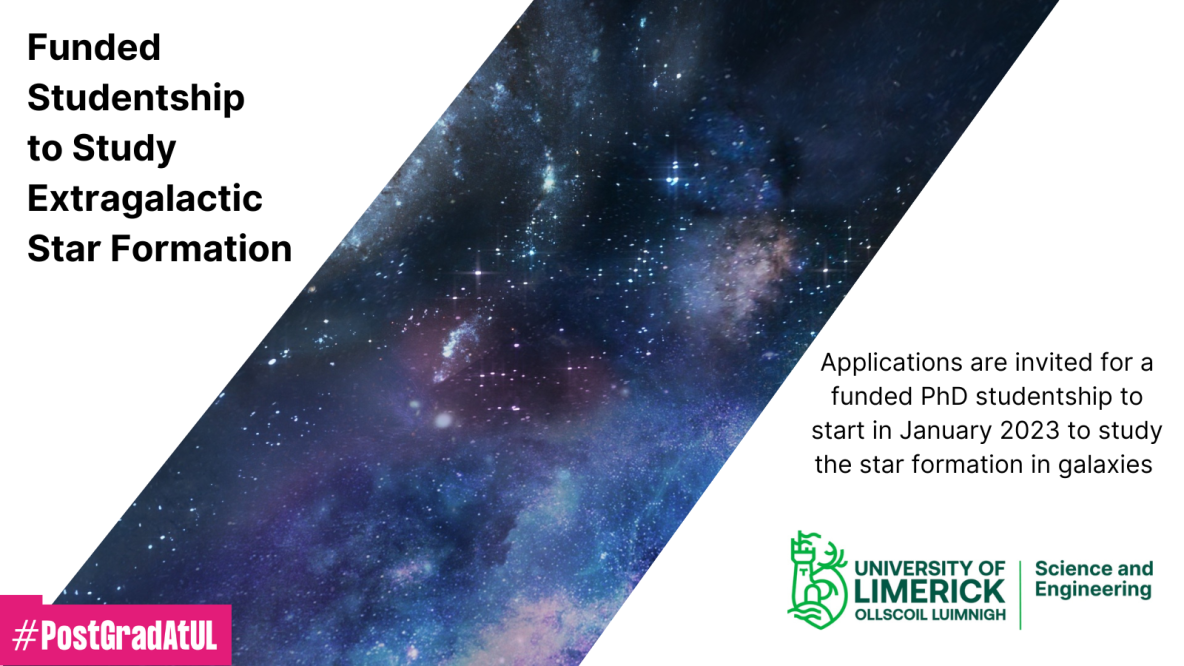

Location: University of Limerick, Ireland
Deadline: 17.00 Irish time (GMT+1) 13th November
Interview date: Monday 28th of November 2022
Start date: January 2023
Duration: Four years full-time (structured PhD) Total Funding value: €95k, to support a PhD scholar over a four-year period, encompassing annual registration fees (for four years) and a stipend of €16,250 per annum.
Applications are invited for a funded PhD studentship to start in January 2023 to study the star formation in galaxies.
Spiral arms in galaxies reveal spectacular organisation of star formation on a galactic scale. The extra-galactic star formation rate depends on stellar mass in the form of a well-behaved power law over several orders of magnitude. The existence of this Star Formation Main Sequence suggests that star formation occurs because of a single underlying and self-similar process. But is there an overarching mechanism for organised star formation, and if so, what is it? The aim of the project is to address this question and establish if the star formation process on a galactic scale does indeed arise from such a mechanism, and establish if this is a self-organised phenomenon, a density wave phenomenon, or a yet unknown phenomenon.
The project will be based in the Department of Physics at the University of Limerick. The successful candidate will be supervised by Dr Ian Clancy and Dr David Corcoran at the University of Limerick, and the project will run in collaboration with the School of Cosmic Physics at the Dublin Institute for Advanced Physics.
For more details, please see PhD studentship – Extragalactic Star Formation at University of Limerick on FindAPhD.com
For informal enquiries about the project, please contact Dr David Corcoran david.corcoran@ul.ie.
General information about the Department of Physics, the University of Limerick and DIAS can be found at Department of Physics | University of Limerick (ul.ie), https://www.ul.ie/ and School of Cosmic Physics – DIAS respectively.